This past January, Governor Larry Hogan and Mayor Stephanie Rawlings-Blake announced Project CORE—a plan for the state to spend $75 million on tearing down and stabilizing vacant buildings and $600 million on incentives for redevelopment over the next seven years. Mayor Rawlings Blake called it “demolition dollars on steroids.”
In February, Governor Hogan added CORE (short for Creating Opportunities for Renewal and Enterprise) to his supplemental budget. The General Assembly approved $7.1 million for Project CORE in 2016 and committed to offer the rest of the funding over the next three years. Baltimore City pledged to match the state’s funding with up to $20.5 million. Although the final details on the amount of funding are still being determined, we expect the overall project will include around $100 million over the next four years. Overall, Project CORE is expected to fund the demolition of as many as 4,000 vacant buildings.
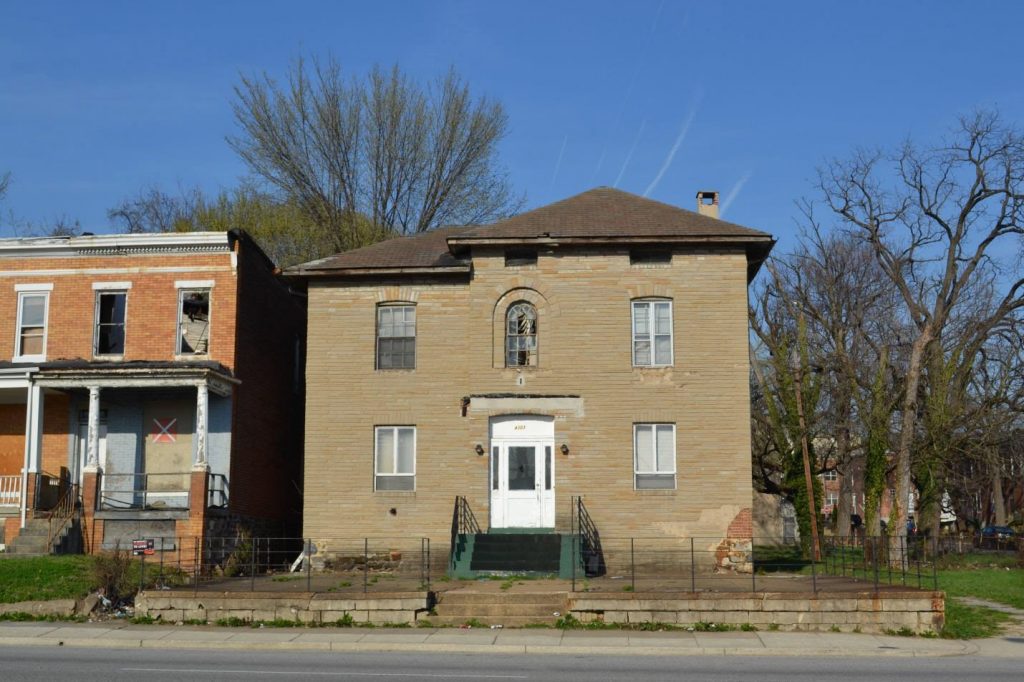
We know we can’t save every vacant house in Baltimore but we know that demolition alone won’t solve the city’s problems either. Baltimore Heritage is seeking a balanced approach that preserves buildings that are important to community residents and invests in alternatives to demolition in all historic neighborhoods. To reach this goal, we need to take a close look at the city’s vacant buildings. We need to understand what buildings may be demolishing under Project CORE and why. Finally, we need to hear from you. What do you think about CORE and the demolition of vacant buildings in Baltimore?
How many vacant houses does Baltimore have? Where are they located?
Baltimore Housing keeps track of over 16,000 vacant buildings. Over two-thirds of the city vacant building notices are found in areas that the Baltimore City Planning Department’s housing market typology calls “stressed markets”—neighborhoods with deteriorated buildings, many vacant properties, and more renters than homeowners.
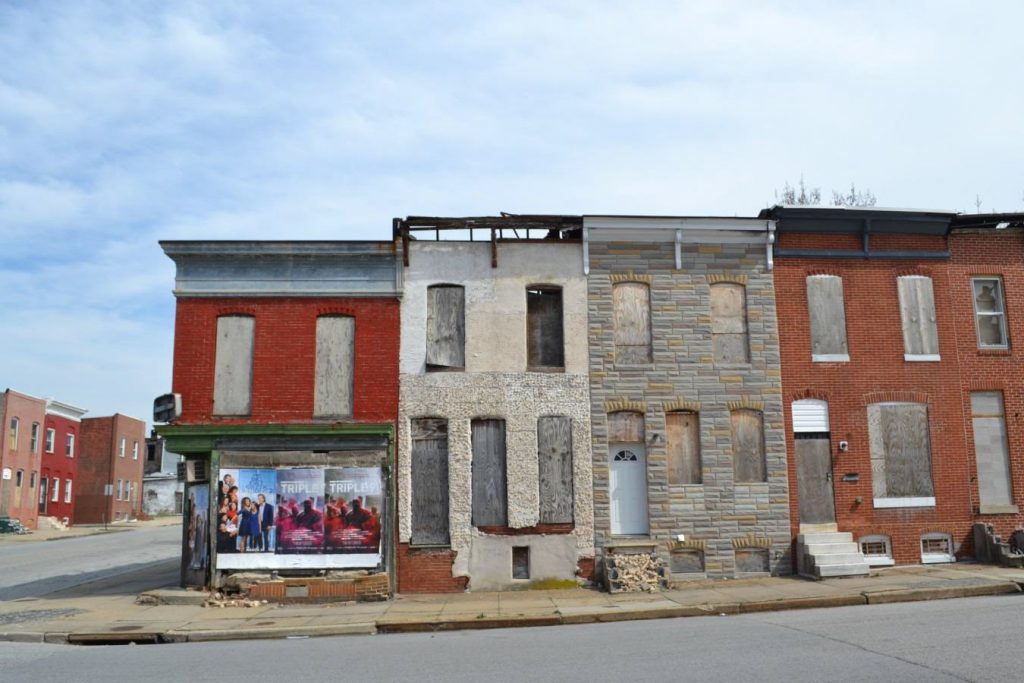
Nearly all of these buildings are fifty years old or older. Over 7,000 of the vacant buildings are in National Register designated historic districts. Eleven districts contain over 100 vacant buildings and two districts, the Old West Baltimore Historic District and Baltimore East/South Clifton Park Historic District, each have over 1,500.
The large number of vacant properties in historically African American neighborhoods like Old West Baltimore is no coincidence. For decades, mortgage discrimination against black homeowners, housing segregation, and employment discrimination have driven disinvestment in African American neighborhoods. This is one reason some housing justice advocates are concerned about demolition policies that follow existing market conditions. For example, a recent report by the Baltimore Housing Roundtable noted the troubling similarity between the city’s housing market typology in 2014 and the “redlining” maps created by the U.S. Home Owners Loan Corporation in the 1930s.
What buildings are affected by Project CORE?
Last month, Baltimore Housing and the Maryland Department of Housing and Community Development (DHCD) shared their 2016 plan for 75 demolition “clusters” (each cluster ranging in size from two to twenty-three buildings) for a total of 468 buildings in twenty-nine neighborhoods. We have published a list of these demolition clusters and created a simple map based on that data. Photographs of the buildings proposed for demolition are available in this report from DHCD.

Approximately 71% of the buildings selected for demolition are in private hands, with most of the remaining properties owned by Baltimore City (Mayor/City Council) and a few held by the Housing Authority of Baltimore City.
Neighborhoods with five or more demolition clusters include Broadway East, Shipley Hill, Middle East, and Sandtown-Winchester. About half the of demolition clusters are inside historic districts, including Baltimore East/South Clifton Park, Old West Baltimore, Franklin Square, Old East Baltimore, Coldstream Homestead Montebello, and East Monument. Other affected neighborhoods include Mondawmin, Upton, Coldstream Homestead Montebello, and Central Park Heights
Additional details on the proposal and affected properties are available through the Baltimore Housing demolition map (showing CORE and other funded demolition) and the Baltimore codeMap which shows past demolition projects funded by the 2012 National Mortgage Settlement (labeled as the 2012 AG Demo Cluster) and other sources.
Why are these buildings selected for demolition?
Over a decade ago, Baltimore Housing moved from tearing down individual vacant buildings to tearing down whole blocks. Arguably, this approach saves the city money by avoiding the cost of rebuilding concrete block party walls adjoining still occupied homes. Similarly, the city avoids displacing homeowners or renters where possible—avoiding the cost of relocating residents and purchasing replacement homes.
Baltimore Housing has argued for demolition not only for “blight elimination” (removing groups of buildings that may threaten public safety) but also on removing houses in neighborhoods where they believe that the demand for housing is never going to return to a level where private developers can profit from the rehab of distressed vacant buildings. 64 of the 74 CORE demolition clusters are located in these “stressed” markets according to the City’s housing typology.
In addition, the city’s demolition strategy is intended to complement other community planning efforts. For example, the buildings in the Shipley Hill neighborhood are targeted for demolition in part to try to improve the safety of students walking to nearby Frederick Elementary School.
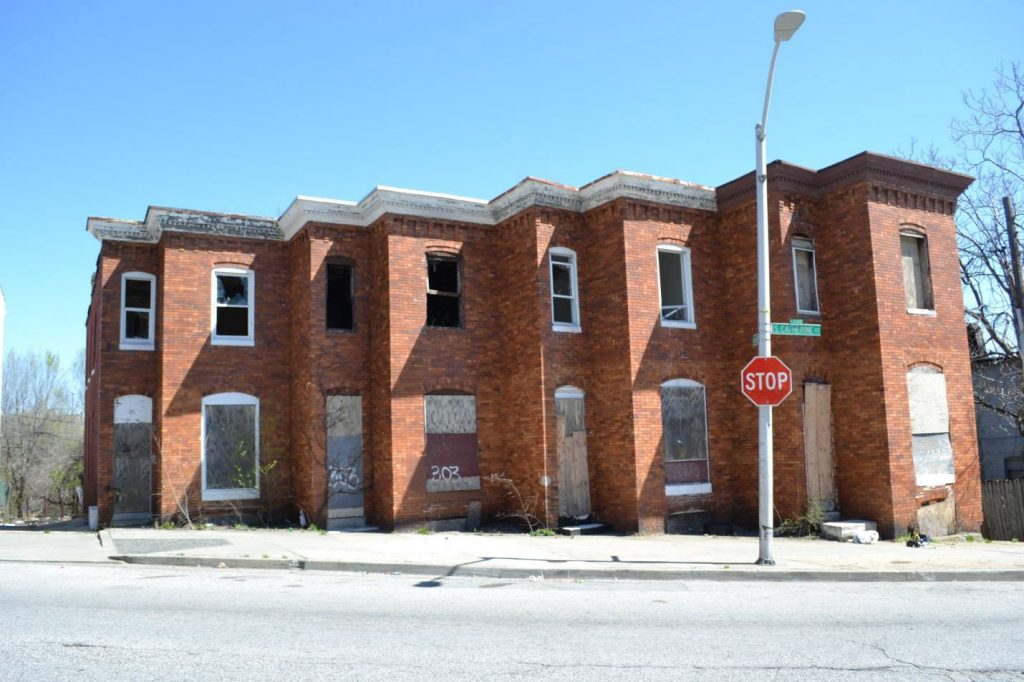
What can Baltimore Heritage do about vacant houses?
The first step in our efforts on CORE and vacant houses more broadly is to understand the issue and make sure that Baltimore residents have a clear and complete understanding of the proposed demolitions. Vacancy is a complicated issue and community residents deserve a voice in what we do about it.
Unfortunately, many of the traditional tools or incentives used to promote historic preservation—landmark designation or state tax credits for private homeowners—simply don’t help when owners don’t have the money to fix up vacant houses. We must take a more comprehensive approach that acknowledges the necessity of demolition in some cases, fights to fund preservation where possible, and advocates for broader policies (such as investments in public transit) that build opportunity for residents in neighborhoods suffering from decades of discrimination and neglect.
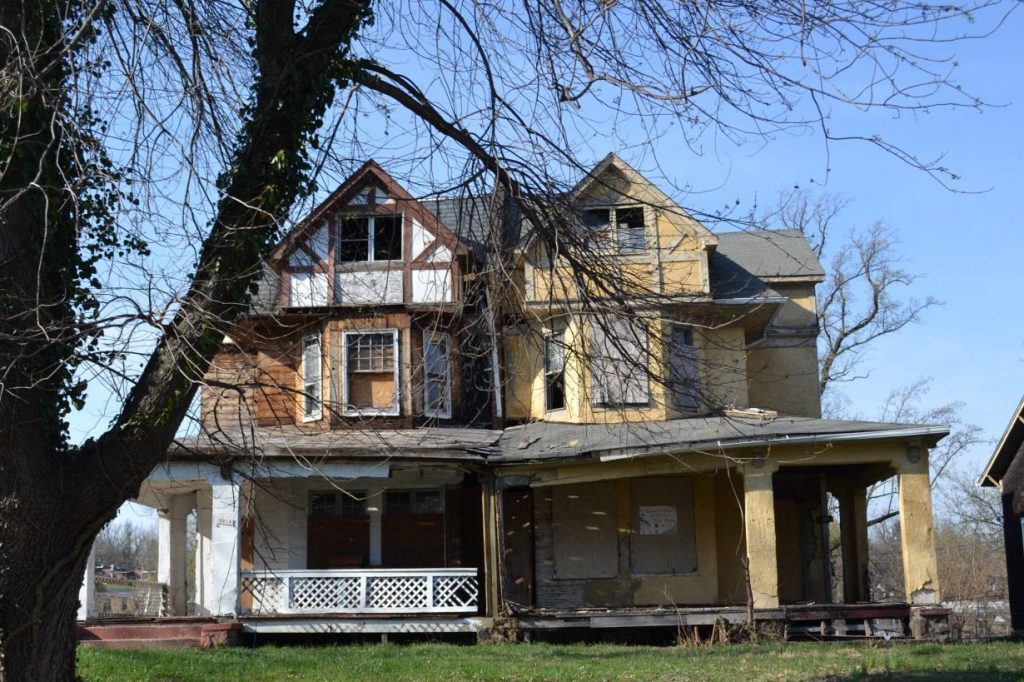
The state funding for demolition comes with the requirement that Maryland Department of Housing and Community Development (DHCD) lead a preservation review process that offers Baltimore Heritage and our statewide partner Preservation Maryland an opportunity to comment on the plans and advocate for “mitigation” to offset some of the impact of demolishing historic houses in historic neighborhoods. Of the millions in city and state funds allocated to demolition in the next four years, we are asking CORE to spend 10% on preservation-based approaches to vacant housing. This funding could support:
- Stabilization of vacant buildings with potential for reuse
- Grants or low-interest loans for private developers to reuse vacant buildings in stressed markets
- Support for community partners to work with residents on vacant housing issues
Later this week, we are meeting with DHCD, the Maryland Historical Trust, Baltimore Housing, and our partners Preservation Maryland and the Baltimore National Heritage Area to discuss mitigation and the next steps in the review process. We expect the state to complete this first round of review in the next few weeks.
Moving forward, we plan to follow this issue closely and we welcome your comments, suggestions or questions on vacant housing and preservation and Project CORE.
Update: DHCD has removed two of the demolition clusters from the list. 4116-4118 Hayward (2 properties) and 1113-117 N Collington (3 properties) are now expected to be rehabilitated instead of demolished.

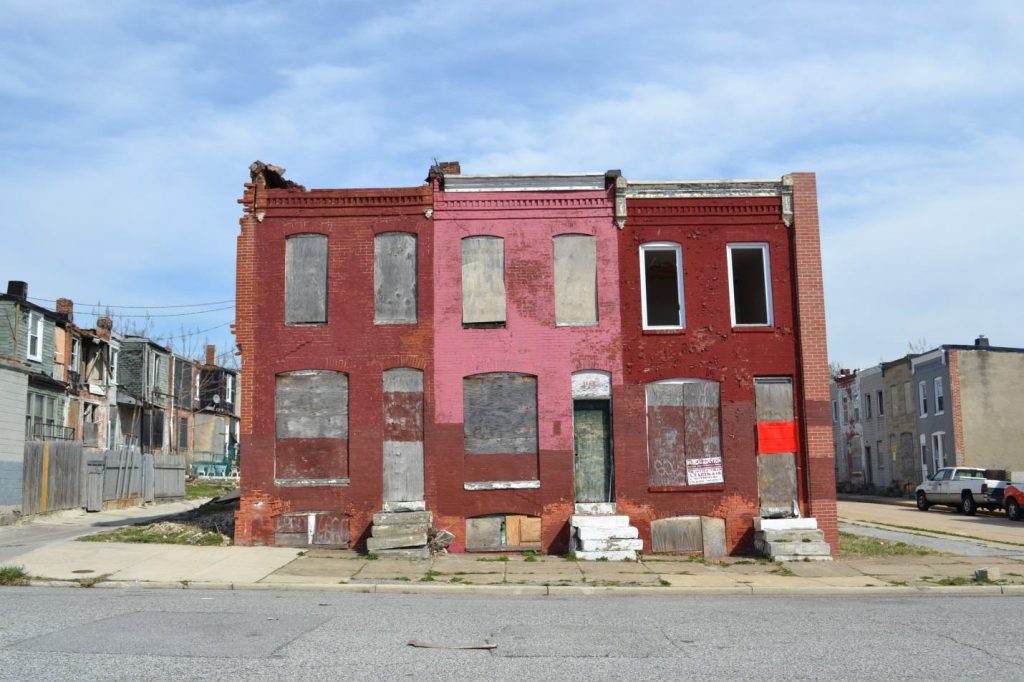
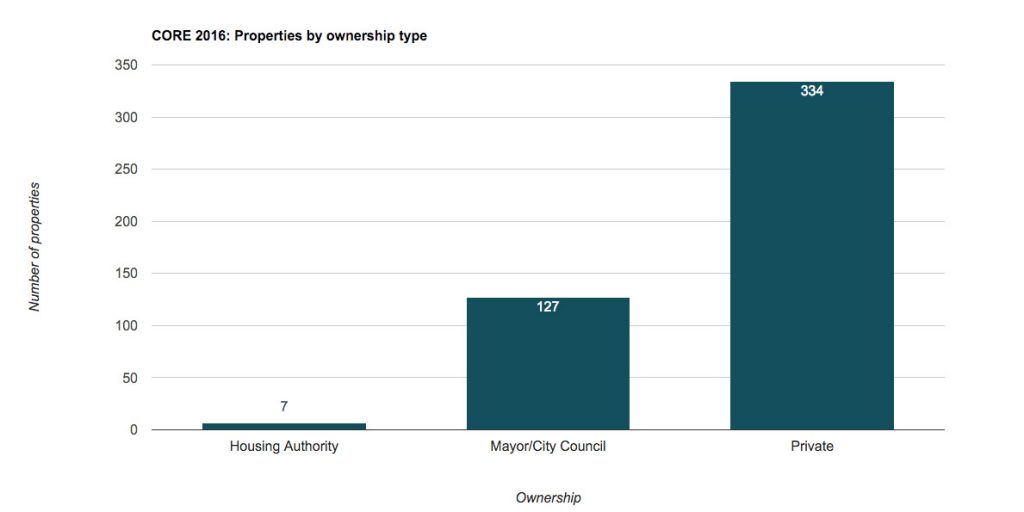
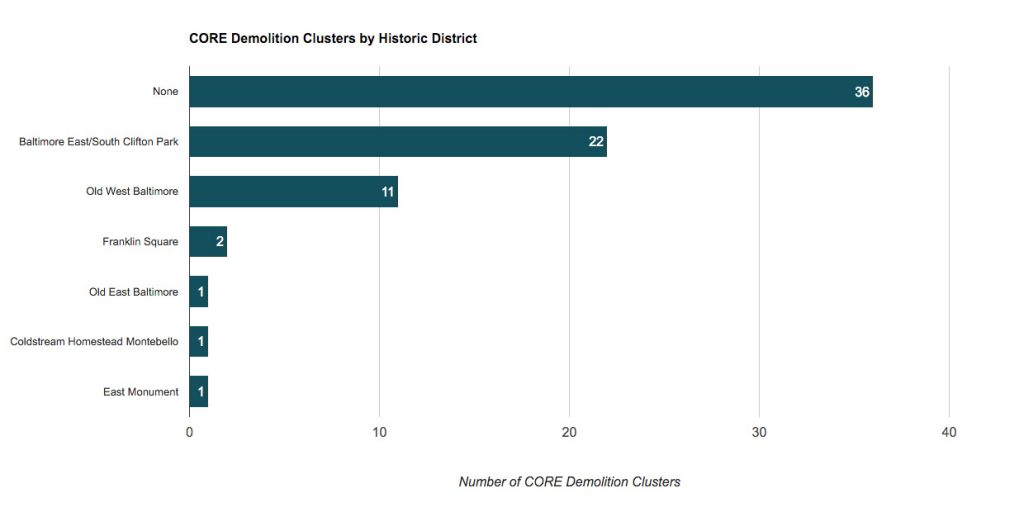
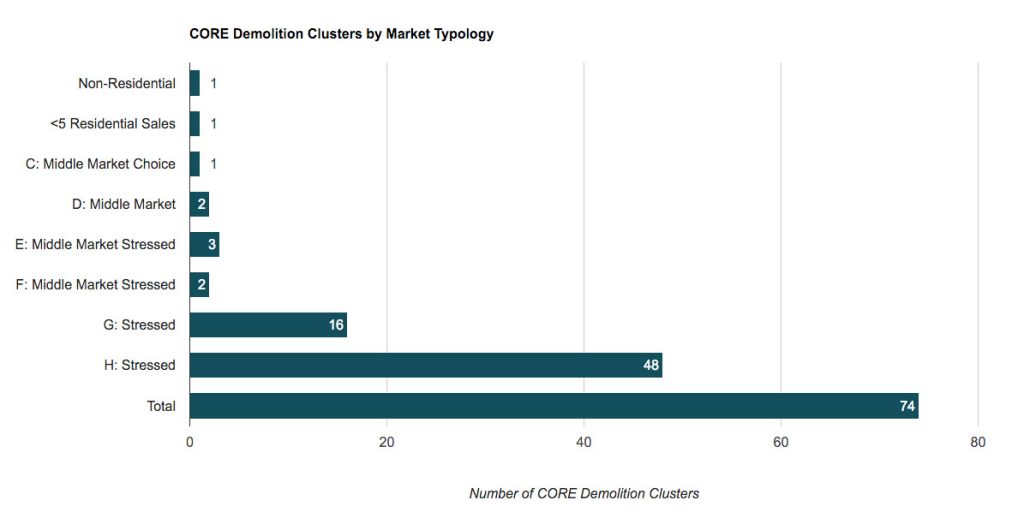
A great logistical puzzle. Shouldn’t the community associations get involved? You can preserve a building, but without community involvement, how do you strengthen the neighborhoods?
I noticed that the Greenmount West Community is not listed. There are many Housing Authority owned properties. An evaluation needs to be completed where the Housing Authority has numerous properties that are considered economically unfeasible for renovation.
We as a community are not being asked for our input to CORE.
Some communities don’t really know what is best for them and they have weak or fragmented community associations. Look at Pennsylvania Avenue. The community associations pushed hard for demolition of the theatres. Was that the correct thing to do?
I hope the University of Maryland group doing work about community-land trusts gets involved in this discussion.
The rountable publication can be found below:
http://www.baltimorehousingroundtable.org/publications?utm_campaign=restoring_trust&utm_medium=email&utm_source=unitedworkers
People live for years with holes in their roofs in these row houses. (I’m not kidding, nor am I speaking metaphorically.) We need an effective volunteer corps that will make repairs like that. Home owners or renters can’t or won’t do it. Big construction firms can’t or won’t do it. There are a lot of young people who love the city and volunteering looks good on a resume. I only worry that Baltimore has somehow made it illegal for regular people to do repairs.